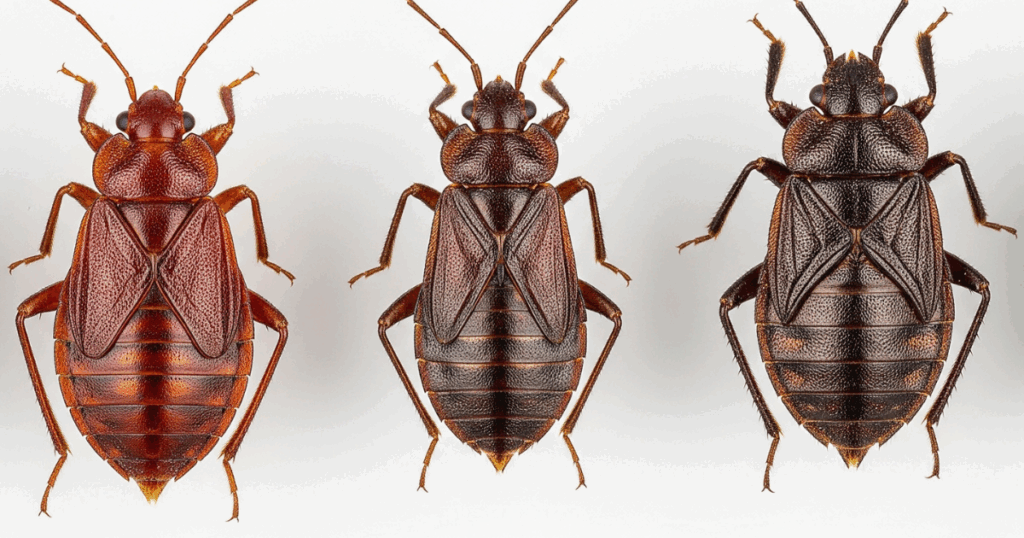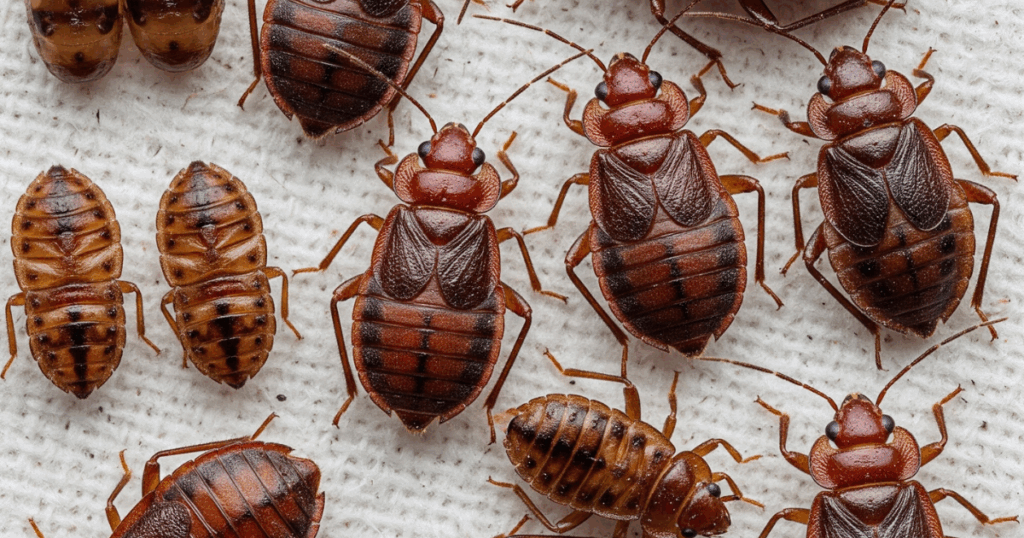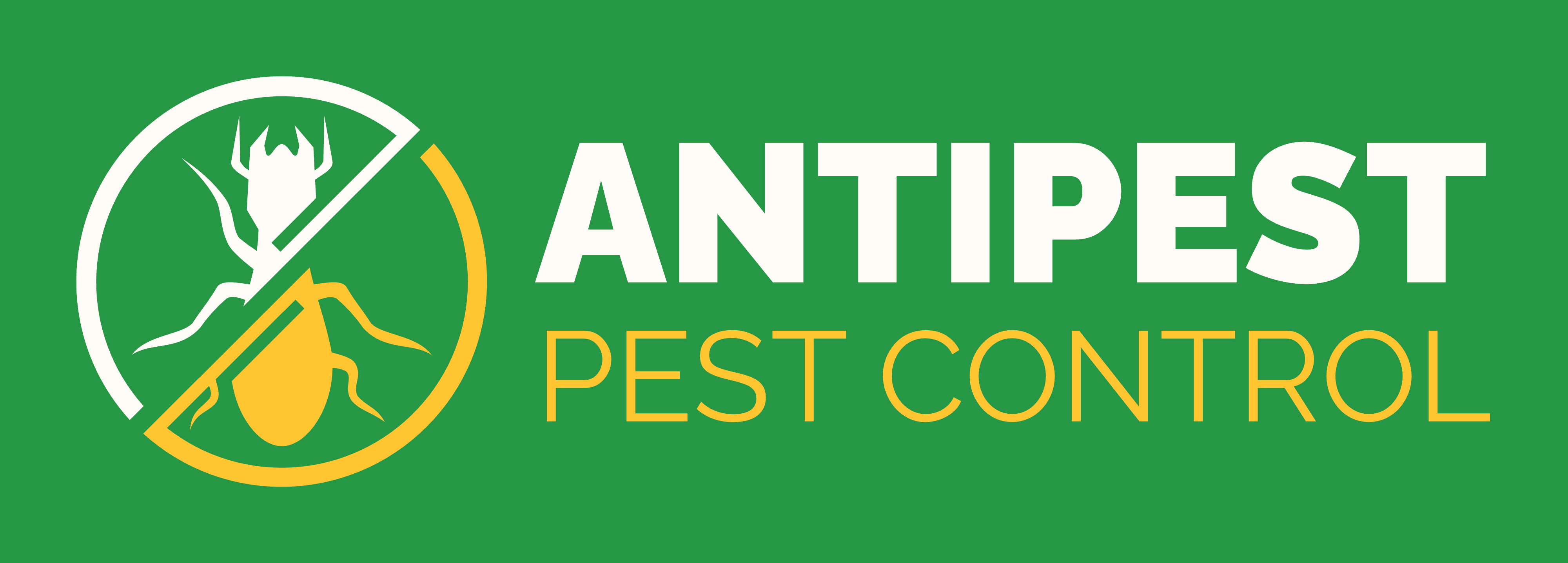How Do Bed Bugs Spread from Room to Room, House to House, Person to Person, complete guide and prevention tips.
Understanding how do bed bugs spread is crucial for every homeowner seeking to protect their property from these persistent parasites. Knowing how do bed bugs spread helps you identify risk factors, implement prevention strategies, and take swift action when infestations occur. This comprehensive guide explores the mechanisms behind how do bed bugs spread, their biology, and proven methods to prevent and control these unwelcome invaders.
Table of Contents
What Are Bed Bugs?

Bed bugs are small, parasitic insects from the genus Cimex that feed exclusively on blood, typically at night. These reddish-brown, wingless insects measure about 3/16-inch long with oval, flattened bodies that resemble apple seeds. Understanding what bed bugs are helps explain how do bed bugs spread so effectively in human environments.
Adult bed bugs can survive in temperatures between 46°F and 113°F, making them highly adaptable to various climates. Their flat bodies allow bed bugs to hide in extremely narrow spaces, as thin as a credit card, which contributes significantly to how do bed bugs spread undetected throughout homes and buildings.
| Bed Bug Characteristics | Details |
| Size | 3/16-inch long (4-5mm) |
| Color | Reddish-brown when unfed, darker after feeding |
| Lifespan | 10-12 months under favorable conditions |
| Movement | Crawling only – cannot fly or jump |
| Feeding frequency | Every 3-7 days when host is available |
| Survival without feeding | Up to 300 days in optimal conditions |
Types of Bed Bugs

Several species of bed bugs exist worldwide, but understanding the main types helps identify how do bed bugs spread in different regions:
| Species | Scientific Name | Geographic Distribution | Spread Patterns |
| Common Bed Bug | Cimex lectularius | Worldwide, temperate climates | Human transportation, structural movement |
| Tropical Bed Bug | Cimex hemipterus | Tropical regions, Florida | Limited to warm climates |
| Bat Bug | Cimex adjunctus | North America | From bat roosts to human dwellings |
The common bed bug (Cimex lectularius) is most relevant when discussing how do bed bugs spread in residential settings, as it’s perfectly adapted to human environments and responsible for most infestations worldwide.
How Do Bed Bugs Reproduce?
Understanding bed bug reproduction is essential to comprehending how do bed bugs spread so rapidly once established. Female bed bugs reproduce through a process called traumatic insemination, laying 3-8 eggs daily under favorable conditions.
| Reproduction Factor | Timeline/Details |
| Eggs per day | 3-8 average, up to 12 maximum |
| Total lifetime eggs | 200-250 average, up to 500 maximum |
| Egg hatching time | 6-17 days depending on temperature |
| Development to adult | 2-4 months under ideal conditions |
| Generations per year | 3-4 complete cycles |
This rapid reproduction explains how do bed bugs spread becomes exponential once a breeding population establishes. A single fertilized female can start an entire infestation, making early detection and prevention critical.
How Can Bed Bugs Get Into My Home?
Understanding how do bed bugs spread into homes helps prevent initial infestations. Bed bugs are exceptional hitchhikers that rely primarily on human transportation since they cannot fly or jump.
| Entry Method | Common Sources | Risk Level | Prevention |
| Travel luggage | Hotels, motels, Airbnb | Very High | Luggage inspection |
| Used furniture | Secondhand stores, online purchases | High | Thorough examination |
| Secondhand clothing | Thrift shops, consignment stores | Medium | Hot water washing |
| Visitors | People from infested homes | Medium | Awareness, inspection |
| Neighboring units | Apartments, condos | High | Structural sealing |
| Used electronics | Laptops, gaming consoles | Low | Careful inspection |
Primary Pathways for Spread
- Travel represents the most common way how do bed bugs spread into homes. Hotels and accommodations worldwide harbor bed bugs that hitchhike on luggage, clothing, and personal belongings. These hidden passengers then establish new infestations in previously bug-free homes.
- Used furniture provides another major pathway for how do bed bugs spread. Mattresses, couches, and upholstered items may contain hidden bed bugs or eggs ready to infest new environments. Even furniture that appears clean can harbor dormant bugs.
How Long Does It Take for Bed Bugs to Spread from Room to Room?
The timeline for how do bed bugs spread within homes depends on several factors including population size, room layout, and available hiding places. Bed bugs typically spread gradually, with movement accelerating as populations grow.
| Spread Timeline | Population Size | Factors Affecting Speed |
| 2-4 weeks | Small infestation (10-50 bugs) | Room proximity, heat sources |
| 1-2 months | Medium infestation (100-500 bugs) | Structural pathways, clutter |
| 2-6 months | Large infestation (500+ bugs) | Multiple harborages, active dispersal |
- Initial spread of how do bed bugs spread room-to-room occurs slowly as bugs follow heat signatures and carbon dioxide from sleeping humans. Bed bugs can crawl 3-4 feet per minute, allowing them to travel between nearby rooms within hours under ideal conditions.
- Population pressure accelerates how do bed bugs spread as colonies grow larger. Overcrowded harborages force bugs to seek new hiding places, leading to faster room-to-room migration and establishment of satellite colonies throughout the home.
How Do Bed Bugs Spread from House to House?
Understanding how do bed bugs spread between different properties reveals their remarkable adaptability and explains why infestations can appear suddenly in previously clean homes.
| Spread Method | Distance | Speed | Prevention Strategy |
| Human transportation | Unlimited | Very fast | Travel precautions |
| Structural movement | Limited (adjacent units) | Slow | Seal entry points |
| Shared laundry facilities | Building-wide | Moderate | Proper protocols |
| Moving services | Any distance | Variable | Professional screening |
- Human transportation dramatically accelerates how do bed bugs spread beyond their natural crawling ability. People unknowingly transport bed bugs on clothing, linens, furniture, and personal belongings, enabling these pests to spread globally.
- Adjacent building spread represents another way how do bed bugs spread house-to-house. In apartments, condominiums, and attached housing, bed bugs crawl through wall voids, electrical conduits, and plumbing spaces to reach neighboring units.
Can Bed Bugs Spread Person to Person?
A critical misconception about how do bed bugs spread involves direct person-to-person transmission. Unlike lice or fleas, bed bugs don’t live on human bodies and cannot spread through direct physical contact.
| Transmission Type | Bed Bugs | Other Parasites (Lice) |
| Live on human body | No | Yes |
| Direct person-to-person | No | Yes |
| Indirect transmission | Yes | Limited |
| Clothing/belongings | Yes | Possible |
Indirect transmission explains how do bed bugs spread between people through contaminated items. Bed bugs travel on clothing, bags, and personal belongings rather than directly on human hosts. This means infected individuals can unknowingly spread bed bugs through their possessions.
How to Tell if You Have Bed Bugs?
Recognizing bed bug signs helps identify how do bed bugs spread throughout your home and enables early intervention before infestations become severe.
| Warning Sign | Location | What It Indicates | Urgency Level |
| Live bugs | Mattress seams, furniture | Active infestation | Immediate |
| Dark stains | Bed linens, mattresses | Bed bug excrement | High |
| Rusty stains | Sheets, pillowcases | Crushed bed bugs | High |
| Sweet musty odor | Heavily infested rooms | Large population | Severe |
| Bite patterns | Exposed skin | Recent feeding activity | Medium |
| Shed skins | Hiding places | Growing population | High |
- Early detection prevents bed bugs from spreading from becoming a major infestation. Check mattress seams, bed frames, and nearby furniture weekly using a flashlight to spot signs before populations explode.
- Bite patterns can indicate how bed bug spread is occurring, though not everyone reacts to bed bug bites. Look for linear or clustered bite marks on exposed skin, often called “breakfast, lunch, and dinner” patterns.
What Should I Do if I Find Bed Bugs in My Home?
Discovering bed bugs requires immediate action to prevent how do bed bugs spread throughout your property. Swift response dramatically improves treatment success and reduces spread to other areas.
| Immediate Actions | Timeline | Purpose |
| Confirm identification | Day 1 | Verify bed bug presence |
| Document infestation | Day 1-2 | Record locations, severity |
| Isolate affected areas | Day 1-3 | Prevent spread |
| Contact professionals | Day 2-3 | Schedule treatment |
| Begin preparation | Day 3-7 | Support treatment efforts |
Immediate Response Steps
- Confirmation prevents misidentification that could delay proper treatment for how do bed bugs spread. Collect samples if possible and compare with reliable identification guides or consult pest control professionals.
- Isolation helps control how do bed bugs spread to unaffected areas. Avoid moving items from infested rooms, seal clothing in plastic bags, and use interceptor traps around bed legs to monitor movement.
- Professional consultation provides expert assessment of how do bed bugs spread in your specific situation. Experienced technicians can identify all infested areas and develop comprehensive treatment plans targeting spread pathways.
How to Stop the Spread of Bed Bugs?
Preventing how do bed bugs spread requires comprehensive strategies targeting all transmission routes. Effective prevention combines environmental management, behavioral changes, and protective measures.
| Prevention Strategy | Effectiveness | Implementation | Maintenance |
| Regular inspection | Very High | Weekly bed checks | Ongoing |
| Travel precautions | High | Hotel inspection protocols | Per trip |
| Clutter reduction | Medium | Remove hiding places | Monthly |
| Mattress encasements | High | Certified bed bug covers | Annual |
| Structural sealing | Medium | Seal cracks and gaps | As needed |
Environmental Controls
- Inspection protocols form the foundation for preventing bed bugs spread. Check mattress seams, bed frames, and upholstered furniture weekly using flashlights to detect early signs of infestation.
- Clutter reduction eliminates hiding places that facilitate how do bed bugs spread within homes. Remove unnecessary items from bedrooms, especially clothing piles and paper stacks that provide concealment.
Travel and Transport Prevention
- Hotel inspection significantly reduces the risk of how do bed bugs spread through luggage. Check beds, upholstered furniture, and curtains immediately upon arrival before unpacking belongings.
- Luggage protection prevents bed bugs from spreading through travel items. Use hard-shell suitcases when possible, store luggage in bathrooms initially, and inspect all items before bringing them inside your home.
How to Prevent Bed Bugs from Returning?
After eliminating an infestation, preventing how do bed bugs spread back into treated areas requires ongoing vigilance and systematic prevention measures.
| Prevention Phase | Key Actions | Timeline | Success Indicators |
| Post-treatment | Monitoring, encasements | Weeks 1-8 | No new activity |
| Short-term | Regular inspections | Months 1-6 | Trap monitoring |
| Long-term | Annual inspections | Ongoing | Continued vigilance |
- Monitoring systems help detect if bed bugs spread returns to treated areas. Install interceptor traps around bed legs and check them weekly for evidence of new bed bug activity.
- Mattress protection prevents bed bugs from spreading back into sleeping areas. Use certified bed bug-proof encasements that completely seal mattresses and box springs for at least one year post-treatment.
- Structural maintenance blocks pathways for how do bed bugs spread through building systems. Regularly inspect and seal cracks in walls, repair loose wallpaper, and maintain barriers between living units.
“Want a cleaner, bug-free space? Discover expert tips on how to get rid of gnats fast.”
Advanced Spread Prevention Techniques
| Advanced Method | Application | Effectiveness | Professional Required |
| Heat treatment | Whole room/building | Very High | Yes |
| Monitoring devices | Strategic placement | High | Optional |
| Pesticide barriers | Perimeter treatment | Medium | Recommended |
| Building-wide coordination | Multi-unit properties | Very High | Yes |
- Heat treatment eliminates how do bed bugs spread by killing all life stages simultaneously. Professional heat treatment raises room temperatures to lethal levels, preventing further spread and reproduction.
- Coordinated treatment in multi-unit buildings addresses how do bed bugs spread between connected units. Simultaneous treatment of adjacent apartments prevents bed bugs from simply moving to untreated areas.
Conclusion
Understanding how do bed bugs spread is fundamental to protecting your home from these persistent parasites. Bed bugs primarily spread through human transportation on luggage, furniture, and personal belongings, making travel and secondhand purchases significant risk factors.
For comprehensive and hassle-free Bed bug removal and long-term pest prevention, trust the professionals at Antipest Office. Visit us at the Antipest Office, Our trained technicians use safe and effective methods to protect your home and business. For service bookings and consultations, call us at +91 9819018398 .
How Do Bed Bugs Spread? FAQs
How do bed bugs spread in the first place?
Bed bugs spread mainly by hitchhiking on luggage, furniture, and personal items when people travel or move.
How long does it take for bed bugs to spread from room to room?
A small infestation can reach an adjacent room in as little as a few weeks, because bed bugs crawl several feet per minute and follow heat and CO₂ cues
How do bed bugs spread person to person?
Bed bugs don’t live on our bodies and rarely transfer through direct contact. Instead they move indirectly on our clothing or belongings, making it seem like person-to-person spread.
How Do Bed Bugs Spread Disease?
Current research shows bed bugs are not known to transmit diseases to humans. Their bites can, however, cause itching, allergic reactions, and secondary skin infections if scratched.
How do bed bugs spread between apartments or houses?
In multi-unit buildings they crawl through wall voids, pipe chases, and electrical outlets. Moving infested furniture or mattresses also helps bed bugs spread from house to house.
Will bed bugs spread through laundry machines
Live bed bugs can survive a cold wash, but a hot wash (≥60°C) followed by high-heat drying kills all stages and stops further spread. Always bag items tightly before transport to machines.
Can pets spread bed bugs around the home?
Pets are not a preferred host, yet bed bugs may grab a ride on pet bedding or carriers if these sit near infested furniture. Regularly washing pet items in hot water limits that risk.
How do I keep bed bugs from spreading while I travel?
Inspect hotel beds, keep luggage on metal racks, and seal worn clothes in plastic bags until washed in hot water.
What’s the fastest way to stop bed bugs spreading after discovery?
Isolate the room, encase the mattress, and vacuum crevices immediately, then call a certified pest professional for heat or pesticide treatment.
How do bed bugs spread back into a home after treatment?
Re-infestations usually start with contaminated luggage, second-hand furniture, or visitors from infested dwellings.

